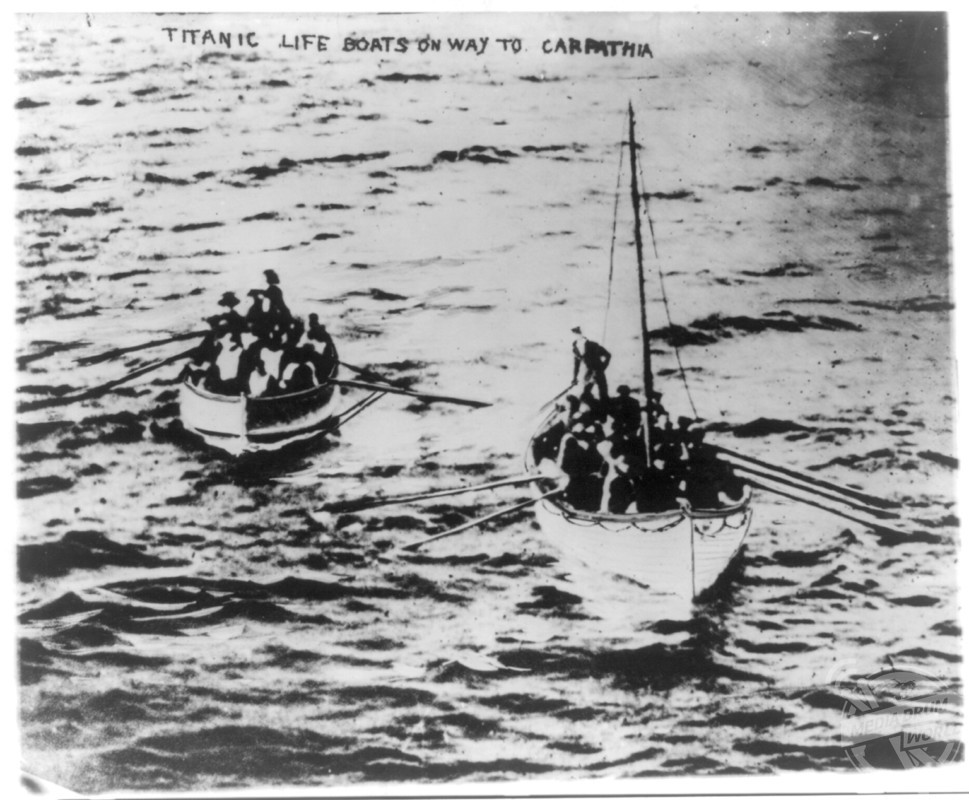By Tom Dare
A SERIES OF CHILLING IMAGES from over a century ago showing how passenger liner The Carpathia rushed to the aid of the Titanic after it had struck an iceberg in the North Atlantic have remerged today, on the anniversary of the day the ship set sail from Southampton for her first and only voyage.
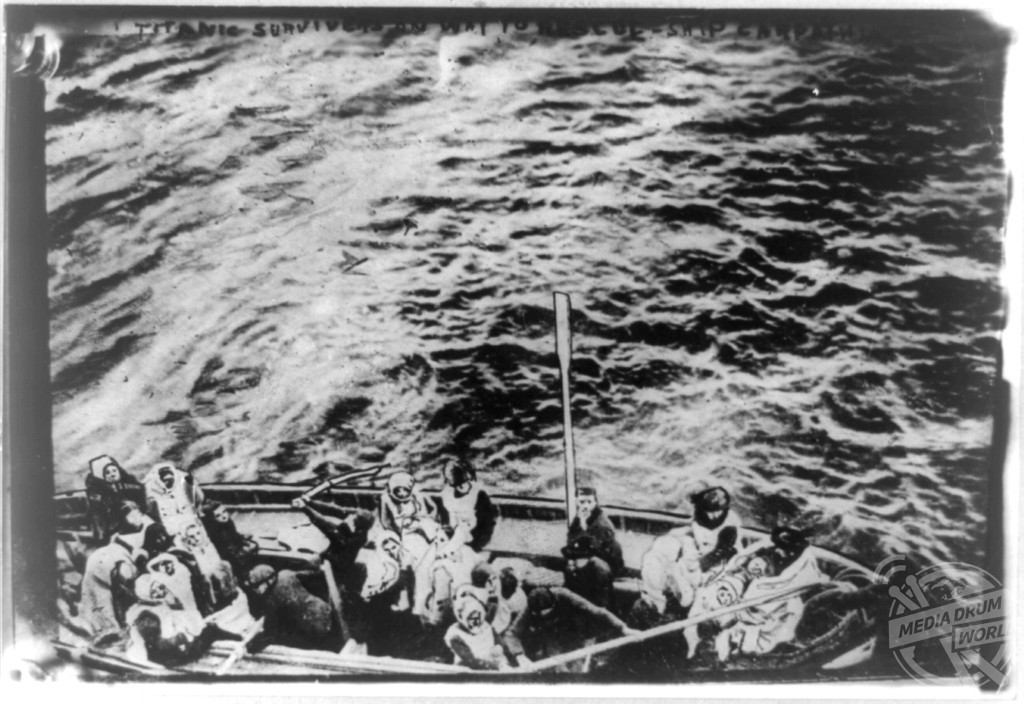
Images from the collection show the view from the deck of the Carpathia as lifeboats from the Titanic approached her, with another showing the officers from the Carpathia who were working that day posing for a picture.
Other shots from the tragic event show several survivors of the disaster, including the socialite Maggie Brown who went on to be known as the Unsinkable Molly Brown, with further pictures showing the sheer size and scope of the ship dubbed as ‘unsinkable’ by its creators.
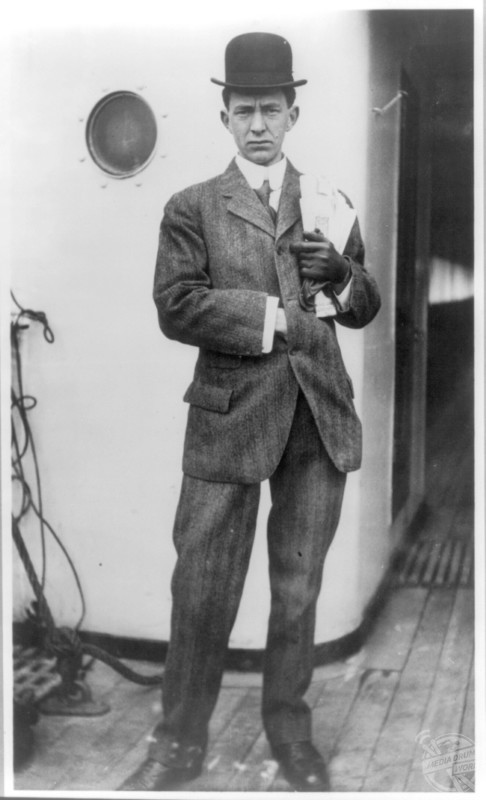
While the story of the sinking of the Titanic is well known thanks to director James Cameron’s 1997 epic of the same name, the tale of how the survivors of the disaster were rescued is not quite as well known.
The Carpathia was in many ways a very similar ship to the Titanic; a passenger liner that ran between England and the United States, among other places. Making her maiden voyage in 1903, the ship was not considered anywhere near as luxury as the Titanic but was described as a standard of the day and could comfortably hold up to 1,700 passengers.
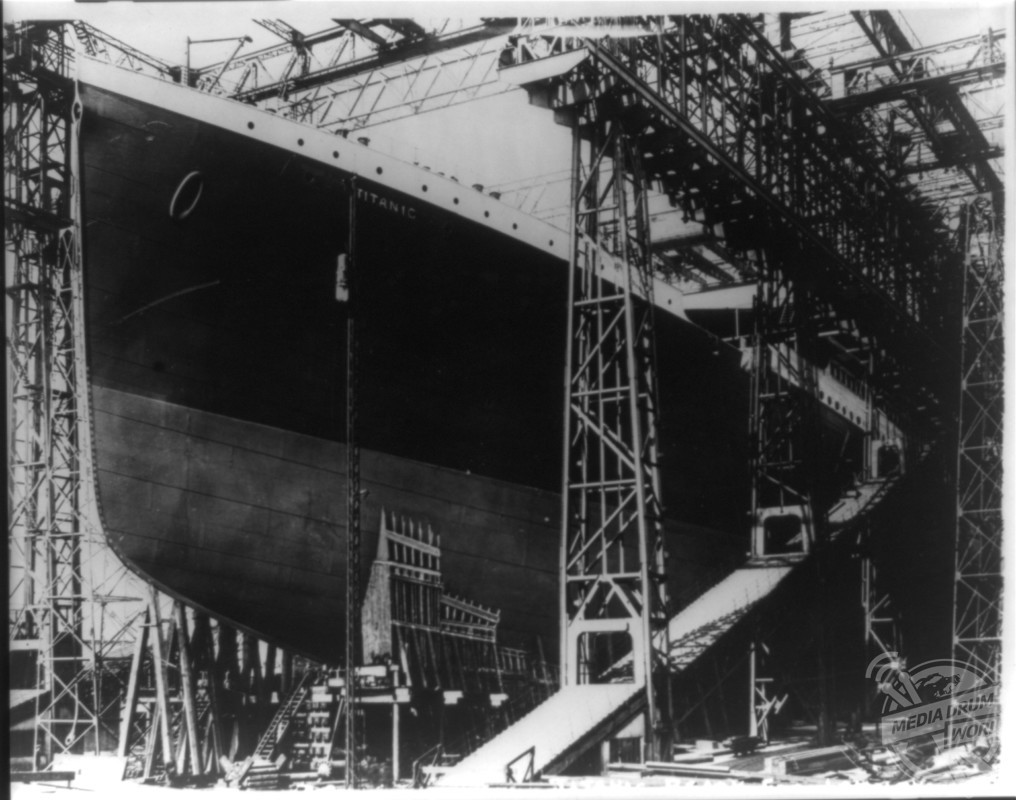
On the day that the Titanic sunk the Carpathia had been making her way from New York City to Austria-Hungary (present day Croatia), setting out a day later than the Titanic on April 11. On the night of the Titanic’s sinking (late April 14/early April 15) the wireless operator of the Carpathia had missed the first few distress signals, having been out on the bridge of the ship, but eventually picked up the call for immediate assistance around half an hour after the ship had struck ice (12.11am). He relayed the message to the Carpathia’s captain, Arthur Henry Rostron, who demanded that the ship turn around immediately and head toward the coordinates the Titanic had given them.
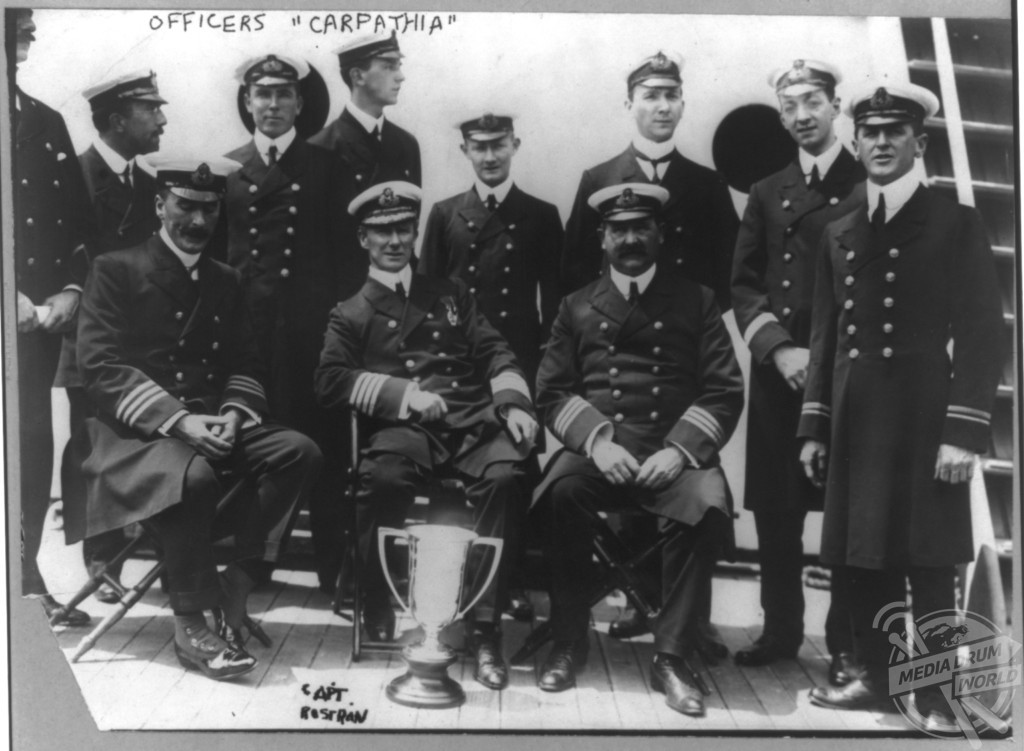
However the sheer size of the ship meant that, despite being just 68 miles away from the Titanic when it received the call, it took nearly three-and-a-half hours for the Carpathia to reach the survivors. Speaking about that night afterward, Captain Rostron said:
“In those days, wireless was nut a recent addition to the equipment of ships at sea. We were quite proud of our installation, and we only carried one operator. This man should have finished duty at midnight, yet here he was at half past twelve. He was still listening in, but he was on the very point of retiring, and was in fact in the act of bending down to undo his boots when the dread call came.
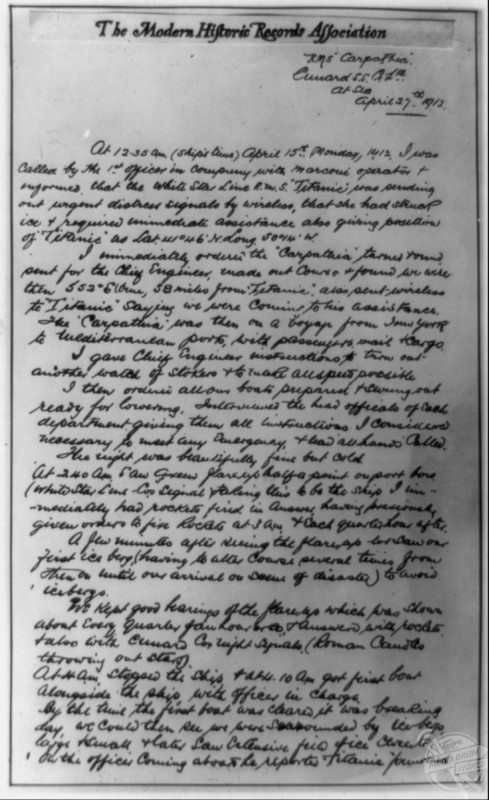
“’SOS Titanic calling. We have struck ice and require immediate assistance.’
“And, throwing the earphones on the table, he raced to find whoever was on watch at the time. It is a dramatic thought that, if the signal had been two or three minutes later we wouldn’t have picked it up.
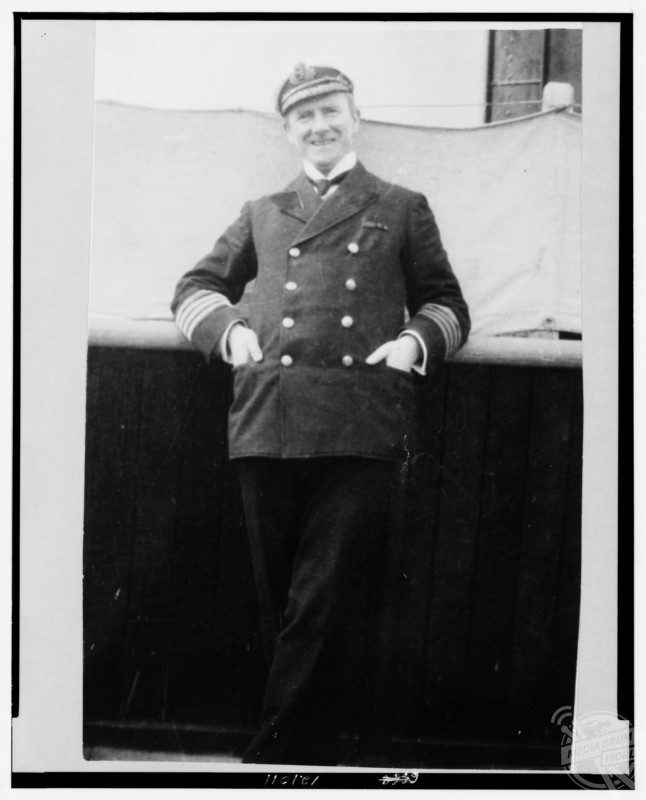
“I can remember my door opening. I had but recently turned in, wasn’t asleep, and said to myself ‘who the dickens is this cheeky beggar coming into my cabin without knocking.
“Then, the first officer was blurting out the facts and, you may be sure, I was very soon wide awake, with thoughts of doing nothing but all that was in the ship’s power to render the aid needed.”
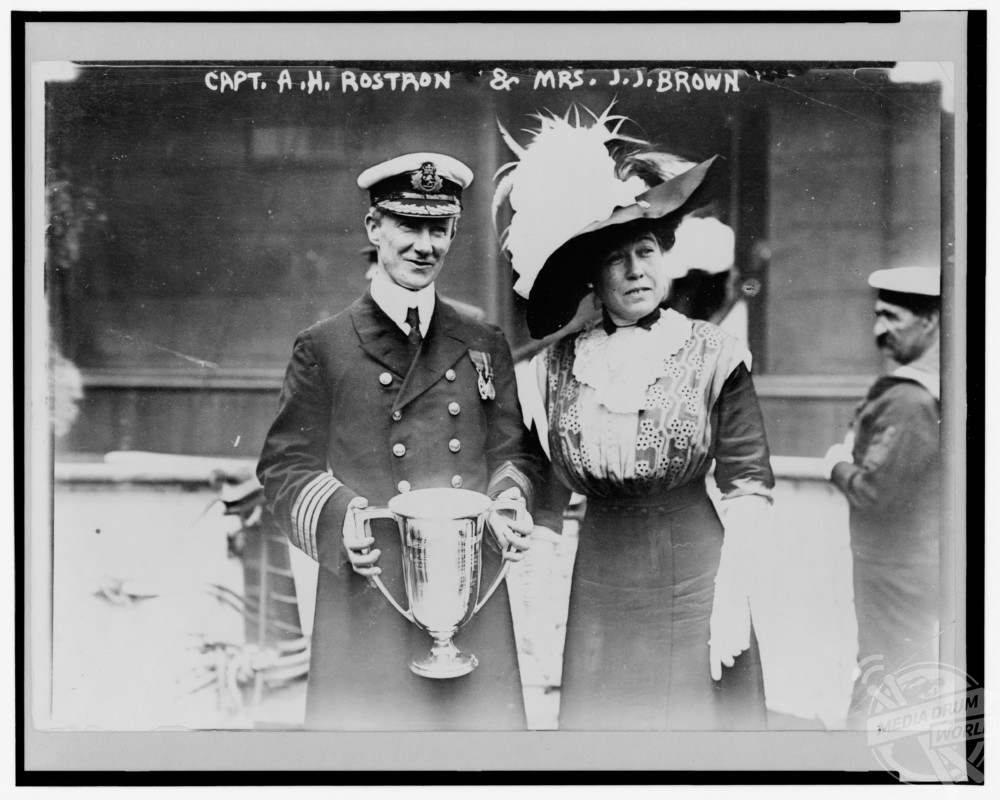
The Carpathia arrived at the edge of the ice field where the Titanic had gone down at approximately 4.00am, around an hour and a half after the Titanic had sunk. The crew then spent the next five hours carefully manoeuvring between the ice field to pick up survivors, managing to rescue just over 700 people from the wreckage. The disaster killed approximately 1,500 people.
After returning to shore the crew of the Carpathia were rewarded for the efforts in rescuing the survivors of the shipwreck. Crew members received bronze medals, officers got silver, and Captain Roston a gold medal, presented to him by ‘Molly’ Brown.

